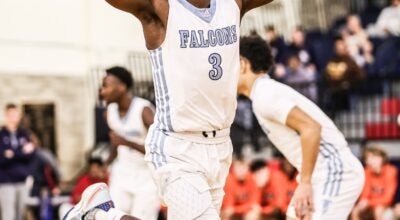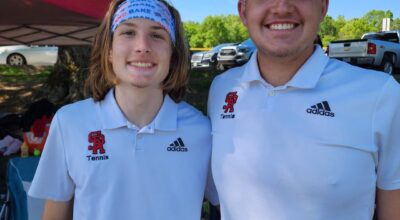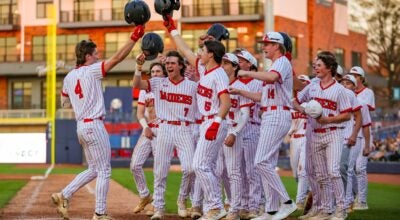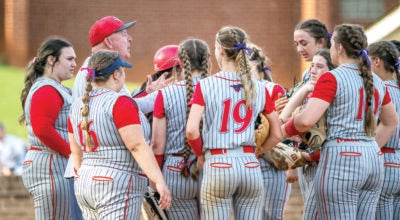NASCAR ran a good show at Coca-Cola 600
Published 12:00 am Monday, May 30, 2011
By Jenna Fryer
Associated Press
CONCORD — The pressure on NASCAR to deliver an outstanding Coca-Cola 600 started to build before the garage even opened at Charlotte Motor Speedway.
Sebastian Vettel kicked off auto racing’s showcase day with a topsy-turvy Formula One victory on Monaco’s winding street circuit. Then rookie JR Hildebrand made a heartbreaking mistake to lose the Indianapolis 500 in the final turn of the 100th running of the “Greatest Spectacle in Racing.”
The closing act of triple-header was NASCAR, which was coming off a ho-hum All-Star race a week earlier. With 600 long miles looming, series officials knew they had two tough acts to follow.
“The pressure is on,” NASCAR President Mike Helton acknowledged an hour before the race. “Hope tonight is good.”
Oh, it most certainly was.
NASCAR delivered a thriller Sunday night that packed more intrigue than anyone could have imagined. Because NASCAR races are typically marked with long lulls of nap-inducing racing, the longest race of the season seemed destined to be a snoozer.
Instead, the suspense started early and carried all the way to the checkered flag, which went to Kevin Harvick when Dale Earnhardt Jr. ran out of gas on the last lap. The only way it could have gone better for NASCAR would have been if Earnhardt actually won and snapped his 105-race losing streak.
Had NASCAR’s most popular driver made it to Victory Lane, critics most certainly would have cried that the fix had been in. Strangely, even after an Earnhardt defeat, the conspiracy theorists still hovered.
So let’s debunk some of the misconceptions:
• NASCAR wanted Earnhardt to win: Well, yeah, everybody in the industry wants Earnhardt to win, including Harvick, who said he felt “so stinking bad for him” after denying Earnhardt a win for the second time this season.
As Earnhardt goes, so does the health of the industry, and NASCAR understands how critical it is for him to end his nearly three-year losing streak. But that doesn’t mean Helton & Co. would rely on deceptive practices to get him a victory.
If they were willing to do so, would they really have waited 105 races to pull it off?
• NASCAR tried to give Earnhardt the win with a no-call: Jimmie Johnson’s engine failure set up a final two-lap sprint to the finish, with Kasey Kahne and Earnhardt lined up side-by-side for the restart. Earnhardt got the jump, and the line behind Kahne stacked up like an accordion.
Debris from Brad Keselowski’s car clearly littered the track, and Jeff Burton spun through traffic in what most certainly would have been a caution on any other lap. But NASCAR didn’t throw the yellow flag this time, and angry fans insisted it was because officials wanted Earnhardt to drive away undisturbed.
Too bad recent NASCAR history shows that standard operating procedure has been to not interrupt the racing on the final laps unless there is a safety hazard. Once Burton’s car made it out of harm’s way, it was in NASCAR’s best interest to let the race play out.
• They still could have given him the win: One way to almost guarantee an Earnhardt victory at that point would be to throw the caution after Earnhardt had taken the white flag. Since the inception of the green-white-checkered rule, NASCAR has allowed three attempts to finish the race with the caveat being the race is over once the leader takes the white flag.
So once Earnhardt began the last lap, officials could have easily frozen the field and let him coast the final 11/2 miles to the checkered flag.
But all of this gives NASCAR far too much credit in knowing all the particulars of real-time situations. Nobody, Earnhardt and crew chief Steve Letarte included, knew for certain when Earnhardt would run out of gas.
The right play, and the consistent play, was for NASCAR to let it unfold naturally.
• But, but, NASCAR calls cautions for far less: That’s true, and the combination of a quick trigger and a reputation for phantom debris cautions during boring stretches works against NASCAR here. It doesn’t help, either, that Harvick himself questioned a debris call earlier in the race when he grumbled over his radio he didn’t see anything on the track and that NASCAR makes those calls to benefit the chosen ones.
What helps, though, is that Harvick had a much softer tone after the race when he defended NASCAR and the difficulty officials have in maintaining policy and procedure. Embroiled in a feud with Kyle Busch that has both Busch and Harvick on probation through June 15, Harvick had long discussions with NASCAR that helped him understand their position.
“The one thing I have learned over the last two or three weeks is there has to be a judge,” Harvick said. “There has to be somebody making those decisions, and there has to be somebody who’s going to say, ‘Yep, there’s debris on the track. I see it and there it is.’ There has to be somebody making the calls, and I’m glad I don’t have to make them.”
There’s a dozen ways to scrutinize Sunday’s race. For once, just accept it for what it was, a pretty good show that held its own on a very special day for motorsports.





